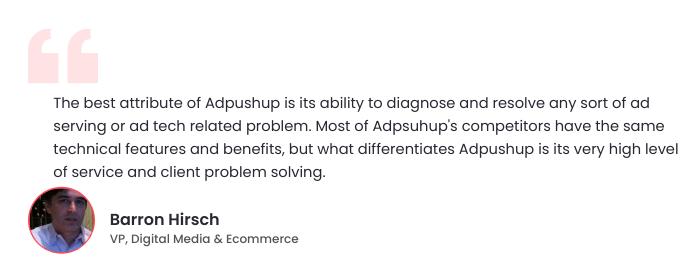On January 14th, Google announced its plans of phasing-out third-party cookies within 2 years. Google has already started this process with their SameSite attribute update that rolls out on 4th February. While this wasn’t an unanticipated move, it marks the beginning of either a digital advertising space where only first-party data will prevail or an entirely cookie-free world.
In any case, publishers worldwide must brace themselves for this impact and implement revenue earning strategies that revolve around first-party data.
What is First-Party Data?
First-party data is user information that is collected through a publisher’s own website. This data is collected through several tools and resources such as CRM, business analytics, and others.
Traditionally, third-party cookies have been used for behavioral targeting. Owing to this, publishers have largely ignored the large amount of first-party data that they own.
Revenue Earning Strategies Through First-Party Data
With the gradual demise of third-party cookies, first-party data is now emerging as the most valuable source for earning revenue. Publishers have mostly handed over their first-party data to advertisers but recent developments call for strategies that publishers can use directly on their websites and distribution channels.
Launching a Subscription or Membership Model
Subscription and membership models are making a comeback. But they require a deep understanding of the kind of content that readers find compelling.
Publishers use subscription models to encourage readers to pay for premium articles or services. This is directly derived from first-party data which is analyzed to understand the kind of content that a website visitor is looking for. This works well for large-scale publishers who have a consistently increasing visitor database. In 2018, the New York Times announced that 60% of their revenue earned came directly from implementing a subscription model.
- Dynamic Paywalls: With a considerable amount of revenue earned through subscription models, publishers such as New York Times and The Washington Post are now experimenting with dynamic paywalls. Dynamic paywalls are an alternative to a one-size-fits-all approach and have the flexibility that publishers require for setting up a revenue model. They help publishers in assessing whether a new user will be willing to subscribe to their content or not, based on their activities on the website. Users are assessed on the basis of several factors including age, device used, geography, most-visited categories, and others.
- Membership Models: Several publishers such as The Guardian and Buzzfeed have implemented membership models, which allow building a community as opposed to subscription models which provide value in exchange of money. Membership models encourage users to participate more than just subscribing to content. Publishers who extend the membership models keep their content free but earn through this model by providing exclusive benefits to members such as annual gifts, emails regarding most-viewed content, and others. This revenue model helps publishers in building a community around their website and indirect email enrichment.

Email Engagement
One of the best ways to make use of first-party data is through email marketing. Email marketing not only provides more clicks to your content but also an opportunity to build interest for your content within your audience. Publishers can offer multiple newsletters and using first-party data, they can put CTAs for particular subscribers redirecting them to subscriptions for their preferred newsletter. Additionally, like Apartment Therapy, first-party data can be mapped to produce dynamic newsletter content for subscribers according to their most-visited articles. This way, publishers can provide fresh content while maintaining this within user interest scope.
Email engagement can also be used for renewing subscriptions on a publisher’s website. If a user regularly reads content under several categories on your website, they are likely to renew their subscription. For this, they might need an email as a reminder. Additionally, re-engagement emails based on categories that your website users are most likely to visit also help in earning more revenue.
Developing a New Product That Invites More Subscribers
First-party data can also help publishers in producing alternate sources of income. After carefully analyzing first-party information related to website users, several publishers have started experimenting with new products. Some of the best examples are:
- Buzzfeed launched Tasty, which garnered approximately 1.7 billion views on its videos in 2016 alone. Though Tasty started as an experiment, Buzzfeed has gained massive user subscription through this digital product.
- Investopedia launched online courses as a side-hustle while continuing to generate main revenue through advertising. In 2018, Investopedia was able to earn $5 million through its paid online courses.
Recognizing trends in users’ first-party data helps in coming up with more ideas that can help in generating revenue on the side.
Also read: What is Second-Party Data? How Can Publishers Use It?
Conclusion
As mentioned above, first-party data is the most valuable resource that a publisher could have. It provides direct insight into reader preferences and helps publishers in making website experience more engaging and relatable for their users. With third-party cookies dying a slow death, these revenue earning strategies through first-party data are the need of the hour.

Shubham is a digital marketer with rich experience working in the advertisement technology industry. He has vast experience in the programmatic industry, driving business strategy and scaling functions including but not limited to growth and marketing, Operations, process optimization, and Sales.







